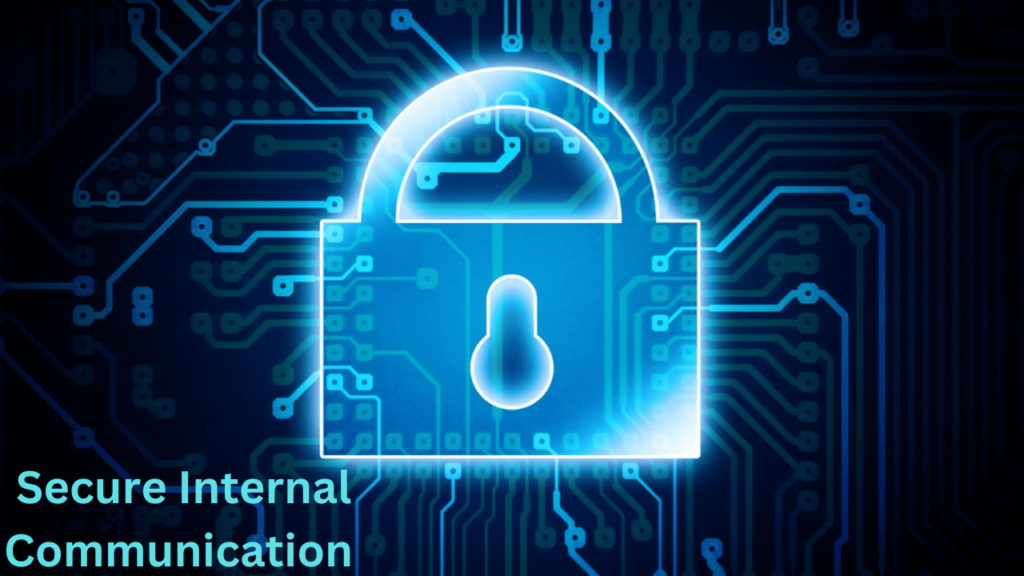In today’s networked world, secure internal communication is no longer optional but a critical business necessity. As business rely increasingly on digital tools to run their operations, the risk of cyber pitfalls targeting internal communications increases exponentially. From protecting personal data to ensuring nonsupervisory compliance, the peace of mind that internal messages are secure can greatly mitigate implicit pitfalls.
Effective internal communication underpins collaboration, decision- timber, and productivity. However, with the increase in remote work and pall- grounded outcomes, companies need to rethink their communication approach to mitigate pitfalls. Relaxed communication can cause severe effects, from fiscal losses to reputational damage.
Why Internal Communication Security is Important
Secure Internal communication encompasses participating sensitive data, strategic plans, and nonpublic reports within the organization. However, companies may suffer from serious effects, including
If similar information falls into the wrong hands.
1. Data Breaches Cyber Criminals exploiting vulnerabilities can pierce sensitive internal data, leading to fiscal and reputational losses.
2. Competitive pitfalls Exposed dispatches may give challengers with critical perceptivity, undermining business strategies.
3. Compliance Issues Failure to adhere to regulations like GDPR or HIPAA can affect forfeitures and legal conduct, impacting business durability.
Also, employees often replace sensitive information such as intellectual property through dispatch or instant messaging applications. However, it offers vast opportunities for hackers, If these platforms require authentic security. So, protecting communication channels is an important part of business life.
Key Issues in Ensuring Communication Security
Even though advanced security measures are not found empty, many organizations still face challenges in keeping internal communication secure
- Mortal Error miscalculations by workers, similar to taking sensitive information on lessened platforms, create many pitfalls.
- Unapproved activities The use of unauthorized applications( shadow IT) for communication can lead to vulnerabilities.
- Phishing Attacks malicious actors often set up phishing tactics to access internal exchanges.
- Lack of Encryption Without proper encryption, messages can be intercepted and read by parties other than the sender.
- Device Vulnerabilities workers using particular or unpatched bias for work communication increase the liability of data leaks.
Modern Approaches to Protecting Communication
Associations can borrow several stylish practices to enhance the security of internal dispatches
1. Use Encrypted Communication Platforms
Encryption is essential to help unauthorized access to dispatches. Platforms similar to Microsoft brigades and Slack offer translated messaging to ensure data confidentiality.
- End-to-End Encryption This ensures that only the sender and philanthropist can read the communication, even if intercepted.
- Transport Layer Security( TLS) TLS encrypts data during transmission, adding another sub caste of security.
2. EnableMulti-Factor Authentication( MFA)
MFA adds a redundant security sub caste by taking multiple forms of verification, making it harder for bushwhackers to gain access.
- Biometric Verification: Using fingerprints or facial recognition can further enhance MFA.
- Time- Grounded Tokens Temporary canons created for logins add another layer of protection against unauthorized access.
3. create a Communication Policy
A clearly defined policy of approved communication tools and protocols guides workers on how to share information safely.
- Approved Tools List Specify which tools workers should use for different types of communication.
- Data Bracket Guidelines Help workers identify what constitutes sensitive data and how it should be handled.
4. Train workers Regular
Regular training sessions on cybersecurity practices keep workers wary of latent traps such as phishing and social engineering.
- Simulated Phishing Tests. These tests can aid to measure worker’s awareness and aid training.
- Engaging Training Modules. Interactive content helps ensure the workers remember important security details.
5. Auditor and audit Communication Tools
Monitoring software enables tracking of communication channels. This can reveal possible anomalies or unauthorized access, icing real- time trouble operation.
- Automated warnings Establish warnings for anomalous activity, such as login attempts from unknown locations.
- Scheduled monitoring Periodic analysis of the activity logs could detect latent vulnerabilities.
Best Tools for Safe Internal Communication
Selecting reliable tools is important for icing secure communication. Here are some mostly recommended options
- Microsoft teams A respectable platform providing an enterprise- level of security, encryption of data, and seamless collaboration with other business tools.
- Slack It is famous for its strong encryption and customizable security settings. Slack is the most preferred internal collaboration tool.
- Signal This app provides end- to- end encryption, making it ideal for sensitive business dispatches.
- Drone for Business With robust encryption features and advanced authentication, drone ensures safe videotape conferencing.
- Cisco Webex A point-rich collaboration tool known for its high security norms and compliance instruments.
Espousing a Zero Trust Model
A Zero Trust approach improves communication security by assuming that every commerce could be an implicit trouble. This model focuses on
- Nonstop Verification Ensuring that druggies and bias are constantly authenticated.
- Least honor Access Restricting access to only what’s necessary for a specific task.
- Micro-Segmentation Dividing the network into lower sections to limit the spread of breaches.
Zero Trust can greatly minimize the impact of a security breach as it confines the breach to a small area instead of allowing free movement throughout the association.
Emerging Trends in Communication Security
With the advancement of technology, new trends are emerging to shape how businesses approach secure communication
- AI-Driven trouble Discovery AI tools are increasingly being used to identify and respond to pitfalls in real-time.
- Blockchain- Based Communication Blockchain technology provides a decentralized means of securing dispatches and assisting tampering.
- Next- Gen Collaboration Tools future platforms will bring together advanced security features with seamless user interactions.
- Quantum Encryption As quantum computing matures, quantum encryption will provide unmatched security for sensitive dispatches.
Key Takeaways for Strengthening Communication Security
- Encrypt all dispatches ensure that dispatches are protected with end- to- end encryption.
- Apply MFA Make access control more secure by using multiple verification methods.
- Update communication tool Frequently. Streamline software to remove security threats.
- Train workers to engage in harmonious fashion in stylish practice reduces mortal error pitfalls.
- Borrow a Zero Trust model. Treat every access attempt as an implicit trouble and corroborate it continuously.
Conclusion
Secure internal communication is an Abecedarian aspect of ultramodern business operations. By addressing implicit vulnerabilities, enforcing advanced tools, and fostering a security-first culture, companies can cover their sensitive data from ever-evolving cyber pitfalls. Whether you’re a small incipiency or a large pot, prioritizing secure internal communication is pivotal to maintaining business integrity and trust.
Take the necessary moment to secure your internal dispatches, and ensure your association stays limber in an ever-increasingly digital world. As cyber pitfalls grow, visionary security measures will not only protect your business but also present a competitive advantage in keeping stakeholder confidence.


